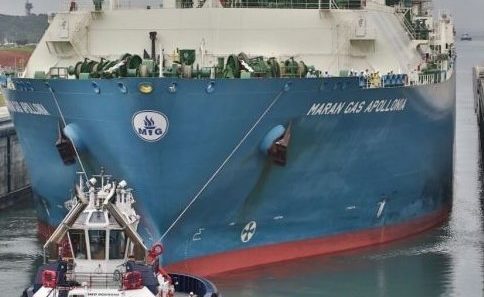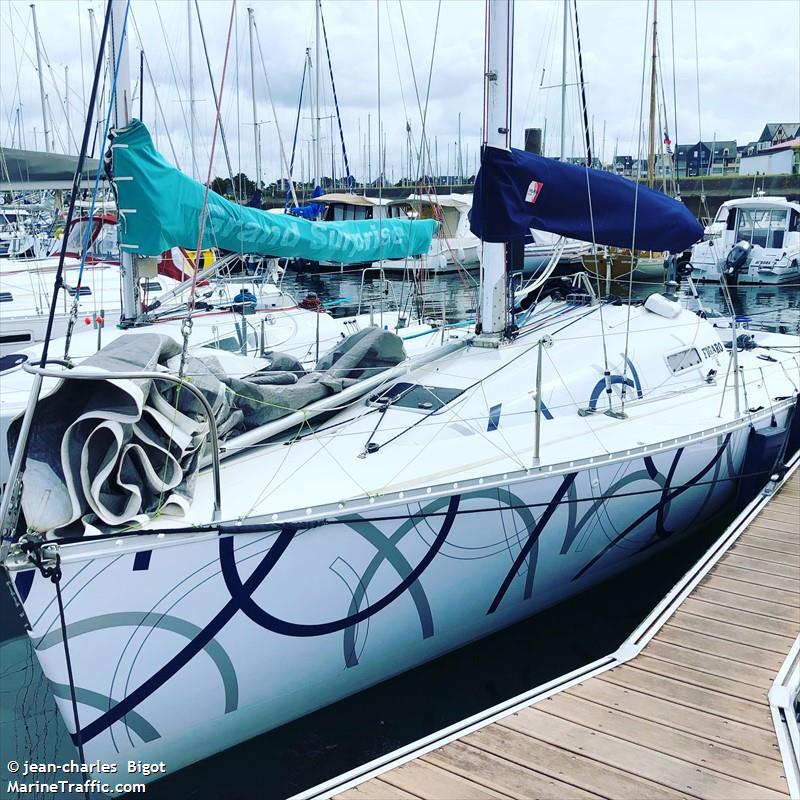First LNG transit along newly expanded Panama Canal

Yesterday, the Panama Canal marked another milestone with the transit of the first-ever liquefied natural gas (LNG) carrier through its expanded locks.
Shell-chartered Maran Gas Apollonia—measuring 289 m in length and 45 m in beam—arrived Monday from the Sabine Pass LNG Terminal on the US Gulf Coast.
“The transit of the first LNG vessel through the new Panama Canal locks is a milestone in the waterway’s history,” said Panama Canal Administrator and CEO Jorge Quijano. “LNG trade will greatly benefit from the expansion, and we look forward to welcoming even more LNG vessels through our great waterway. This transit marks the beginning of a new era that will result in cleaner and lower cost energy for the world.”
The expanded canal can accommodate 90% of the world’s LNG tankers, the canal administration claims, saying in a release it “will have a major impact on global LNG flows and offer numerous benefits to shippers”.
For example, with the United States poised to become one of the world’s top LNG exporters in the next five years, the canal will allow vessels departing the US East and Gulf Coast for Asia to enjoy significant reductions in voyage times (up to 22.8 days roundtrip), making US gas deliveries to major Asian importers very competitive. Vessels departing the US Gulf Coast for the West Coast of South America will similarly experience notable time savings.
In addition, LNG ships from the production plants in Trinidad and Tobago could head to Chile where LNG is regasified and distributed for energy-producing purposes. For this route, the expanded canal provides savings of 6.3 days in transit time compared to the Magellan Strait.
Providing further advantage, the canal instituted a new tolls structure to offer substantial cost savings to LNG vessels conducting roundtrip voyages. The new tolls reduce ballast fees for LNG customers who use the same vessel for a roundtrip voyage as opposed to using an alternate route, so long as the transit in ballast is made within 60 days after the laden transit was completed.
The LNG news was slightly soured by reports carried in a variety of mainstream news sources yesterday that claimed three ships have scuffed the walls of the canal since it opened a month ago.
Some groups have claimed the new locks are too small for safe operations now that the canal can take ships three times larger than before, something the canal authorities dispute.

 —measuring 289 m in length and 45 m in beam—arrived Monday from the Sabine Pass LNG Terminal on the US Gulf Coast.
—measuring 289 m in length and 45 m in beam—arrived Monday from the Sabine Pass LNG Terminal on the US Gulf Coast.
Market Comments. The new locks of the Panama Canal, how useful are they to the LNG trade?
Maran Gas Apollonia, the 19th LNG ship to load at the Sabine Pass Liquefaction facility in the US has entered the Panama Canal using the new locks (“Neopanamax”) to make the trip from the Atlantic to Pacific Basin. The destination of the ship has not been posted. This ship is closely followed by British Merchant out of Trinidad and going to Manzanillo, Mexico.
We have looked at previous transits from Trinidad to Manzanillo, 10 voyages via the southern tip of South America. Those voyages ranged in length from 25 days to 34 days. We presume that some, if not most, of the variance in transit times is related to weather. However, some may be intentional on the part of the recipient of the cargo in managing space in the tanks at the receiving terminal. Since inventory levels at Quintero are not disclosed, there is no way to distinguish the different causes of variations in arrival dates.
Nonetheless, that makes the Panama Canal transit much more efficient, in terms of time, for a voyage from Trinidad to Manzanillo. The presently posted ETA for British Merchant at Manzanillo show a 12 day transit. The choice, therefore as to whether or not to use the Panama Canal or make the long voyage around South America is an economic one, or if inventory levels at Manzanillo (again, not disclosed) have fallen to low levels then as a matter of urgency the customer may choose an uneconomic alternative. But, with the current low charter prices prevailing in the markets, it would appear that long voyages may continue to be the choice.
From what we understand, the Canal fee itself is about equivalent to 10 days of steaming an LNG ship, considering that the voyage will be a round trip through the Canal. This generalization, too, is subject to a number of widely varying assumptions.
In actuality, it is not clear how market participants who either own the ships they use for LNG deliveries, or have them on long term charter account for those costs. In such a case the seller who is delivering DES basis may or may not have urgent need for the ship for a following delivery. We are presently seeing a considerable number of ships being loaded and either slow steaming for delivery or simply being parked until the customer needs the LNG. The same general approach applies to situations where the LNG customer, consumer, is buying FOB loading port and providing their own ships. Again, we are seeing today opportunistic buying and holding of cargoes (either slow steaming or parked somewhere).
In summary, as for the usefulness of the new locks at Panama, we believe they will be very valuable for the Atlantic-Pacific LNG trade in times of tight markets, and perhaps less useful in times of well supplied markets. As an option, they are very useful. That may not be much comfort to the Panama Canal Authority, however, who have no influence on the market conditions that dictate the choice.